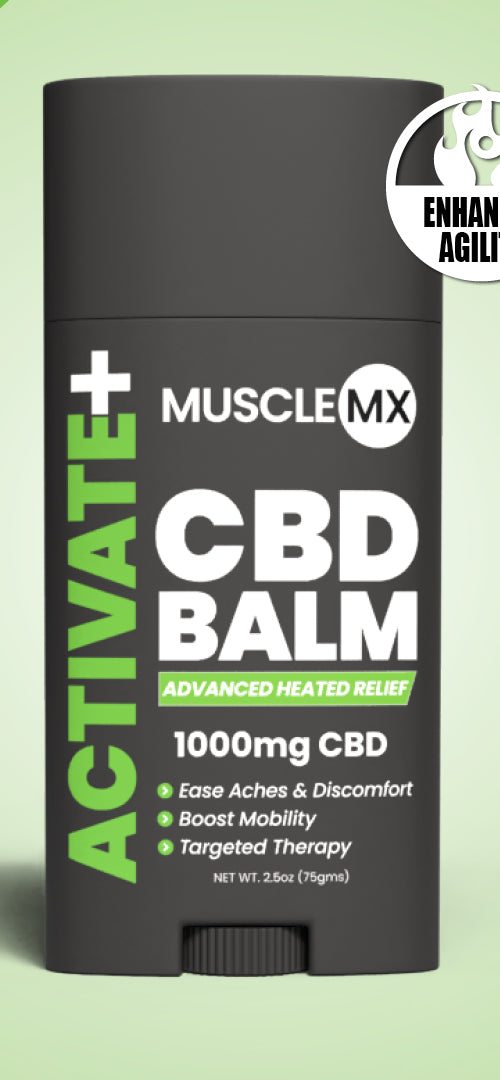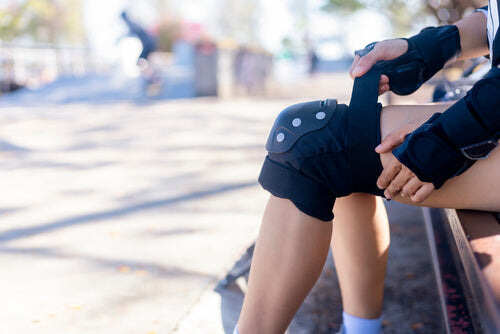Knees are the unsung heroes in sports, carrying us through quick sprints, rapid pivots, and powerful jumps. Yet, when it comes to high-impact sports, the knees take the brunt of the force. Athletes often face knee injuries due to repetitive stress, improper techniques, or inadequate protection. Knee injuries don't just bench you temporarily—they can cause long-term damage that affects your mobility and overall quality of life. You see, protecting your knees isn’t just about staying injury-free; it’s about prolonging your athletic career, improving performance, and maintaining an active lifestyle.
What are High-Impact Sports?
High-impact sports are activities that involve intense physical effort, rapid movement changes, and frequent body contact with the ground or other players. These sports are physically demanding, often requiring an athlete to perform sudden stops, jumps, and turns, which can significantly strain the knees.
Examples of high-impact sports include:
-
Basketball: With its constant sprinting, jumping, and abrupt changes in direction, basketball puts immense pressure on the knees.
-
Football: Both American and global football (soccer) involve sudden lateral movements, rapid direction changes, and high-speed impacts.
-
Soccer: Includes running, jumping, and quick directional changes, which can stress joints.
-
Rugby: A contact sport with high physical demands and frequent collisions.
-
Hockey: Features high-speed skating, physical contact, and sudden movements.
-
Running/Track Events: The constant pounding of feet against hard surfaces makes running especially taxing on the knees.
-
Tennis: Fast lateral movements and quick stops strain the knee ligaments.
-
Skiing: High-speed downhill runs and jumps put extreme strain on the knees, especially during landings.
-
Martial Arts: Involves high-intensity training and physical contact, which can be hard on the body.
The Overall Importance of Knee Protection
Your knees are central to every movement you make, especially in high-impact sports. These joints help absorb the shock from impacts, provide stability during movement, and enable flexibility. Without proper knee protection, the risk of injury increases significantly, including:
-
ACL (Anterior Cruciate Ligament) Tears: One of the most common sports injuries.
-
Meniscus Tears: Caused by twisting motions under pressure.
-
Patellar Tendonitis (Jumper’s Knee): Due to repetitive stress on the knee.
-
Runner’s Knee: Pain around the kneecap, often caused by overuse.
Essentially, these injuries and others can not only end your season but also lead to chronic pain or mobility issues later in life. In fact, studies suggest that athletes in high-impact sports are at a much higher risk of developing osteoarthritis due to overuse injuries or improper technique. The stakes are high, and so is the necessity to adopt the right preventive measures.
Techniques to Reduce Strain and Prevent Injury to Your Knees When Playing High-Impact Sports
Proper protection and injury prevention strategies can help minimize the risk of these injuries, keeping you in the game for longer. So, with that being said, let’s cover 12 techniques in particular that can help reduce strain and prevent injury to your knees, no matter the high-impact sport really.
Technique #1: Strengthen Your Quadriceps and Hamstrings
Strong muscles around the knee provide stability and take some of the pressure off your joints. Quadriceps and hamstrings play a crucial role in supporting your knees during dynamic movements. Incorporating strength-training exercises such as squats, lunges, and hamstring curls helps create a muscular support system for your knees, reducing the likelihood of injury. Resistance bands and low-impact exercises can help strengthen these muscles without putting additional strain on the knees.
Technique #2: Always Warm Up Properly
Warming up is essential for preparing your muscles and joints for the physical demands of your sport. A well-rounded warm-up increases blood flow, improves flexibility, and prepares your body for dynamic movement. Incorporate activities like light jogging, dynamic stretches, and mobility exercises to ensure your knees are ready for action.
A good warm-up routine may include:
- High knees
- Butt kicks
- Leg swings
- Walking lunges
Warming up correctly helps maintain knee flexibility, reducing strain during intense movements. For additional muscle recovery support, you can check out products like the Muscle MX Activate CBD Balm to enhance blood flow and reduce stiffness.
Technique #3: Use Proper Footwear
The right shoes can make a world of difference in protecting your knees. Wearing footwear designed specifically for your sport provides the necessary cushioning and support for your joints. For instance, basketball shoes are engineered with extra ankle support to prevent twisting, while running shoes offer superior shock absorption.
Additionally, using insoles designed to promote knee alignment can help distribute the impact more evenly across the foot and reduce strain on your knees.
Technique #4: Wear Knee Braces or Sleeves
Knee braces and sleeves are more than just fashion statements—they provide compression, support, and stability. Compression sleeves improve blood circulation, which helps reduce swelling during and after sports. Braces, on the other hand, offer additional structural support and can prevent hyperextension or side-to-side movement that can cause injuries.
If you're recovering from an injury or need additional support, wearing knee braces can provide the protection you need to avoid further strain. Options like Muscle MX Recovery CBD Balm also help provide relief when applied directly to the knees for muscle relaxation and recovery.
Technique #5: Focus on Balance and Agility Training
Agility exercises and balance drills improve your coordination and reduce the likelihood of awkward falls or missteps that could result in knee injuries. Simple drills like side-to-side shuffles, ladder drills, and balance board exercises can help improve your overall stability. Agility training essentially:
- Enhances joint stability.
- Boosts reflexes during sudden movements.
- Helps maintain proper form during rapid direction changes.
These exercises teach your body to distribute weight evenly, reducing the stress placed on your knees.
Technique #6: Maintain a Healthy Weight
Carrying extra body weight puts undue pressure on your knees, increasing the risk of injury during high-impact activities. By maintaining a healthy weight, you reduce the amount of force your knees need to absorb during each movement.
A balanced diet rich in anti-inflammatory foods like fruits, vegetables, and lean proteins can help reduce knee stress. For added nutritional support, incorporating Muscle MX CBD Gummies could be beneficial for reducing inflammation.
Technique #7: Practice Proper Form
Using the right form during physical activities is key to preventing injury. Whether you're landing from a jump, sprinting, or changing direction, your posture and body alignment should be correct to minimize the strain on your knees. For instance, avoid locking your knees while jumping or landing, and ensure that your knees track directly over your toes during lunges or squats.
Here’s a quick form checklist:
- Keep your knees slightly bent when landing
- Always engage your core to reduce pressure on the knees
- Use your hips and thighs to absorb impacts rather than relying solely on your knees
Technique #8: Cool Down and Stretch After Workouts
Just as warming up prepares your body for action, cooling down is vital for recovery. Stretching after intense activity allows your muscles and joints to relax and return to their normal length. Focus on static stretches that target the quads, hamstrings, calves, and hip flexors—key muscle groups connected to knee health.
Cooling down prevents muscle tightness, which could lead to knee pain and stiffness. In this case, Muscle MX Restore CBD Lotion can be used post-workout to soothe aching muscles and joints, helping with faster recovery and reducing soreness.
Technique #9: Avoid Overtraining
Overuse injuries are common in high-impact sports, especially when athletes push their bodies to the limit without proper rest. Repeated strain on the knees without adequate recovery can result in chronic injuries such as tendonitis or stress fractures.
To prevent this, make sure you:
- Schedule regular rest days
- Incorporate cross-training activities to give your knees a break
- Listen to your body and avoid playing through pain
Technique #10: Incorporate Low-Impact Activities for Recovery
High-impact sports take a toll on your knees, so it's crucial to mix in low-impact activities like swimming, cycling, or yoga to keep your body in shape without stressing your joints. Low-impact exercises maintain cardiovascular fitness while allowing your knees to recover from the strain. These activities:
- Promote joint flexibility
- Provide a full-body workout with minimal knee strain
- Help build endurance without the harsh impact on your knees
Technique #11: Hydrate Properly
Staying hydrated is essential for maintaining joint lubrication, which is critical for preventing knee injuries. Dehydration can cause the body to lose fluid in the cartilage and tissues surrounding the knees, making them more prone to wear and tear. Aim to drink water consistently throughout the day, particularly during and after workouts.
Technique #12: Seek Regular Physical Therapy or Chiropractic Care
If you're consistently engaged in high-impact sports, routine visits to a physical therapist or chiropractor can help maintain knee health. These professionals can identify weaknesses or imbalances in your body and provide exercises or treatments to correct them before they lead to injuries.
A physical therapist might suggest specific strengthening or mobility exercises tailored to your sport, while a chiropractor can help ensure your body stays properly aligned.
Stay in the Game by Keeping Your Knees Protected
No doubt, your knees are invaluable to your performance in high-impact sports, and taking care of them is essential to your longevity as an athlete. By focusing on proper strength training, agility exercises, form, and recovery techniques, you can significantly reduce the risk of knee injuries. Whether you're a seasoned professional or a weekend warrior, implementing these techniques will ensure you stay on the field, court, or track longer.
Taking care of your knees isn’t just about staying active today—it’s about safeguarding your ability to enjoy sports for years to come. Stay proactive, be mindful of your body, and protect your knees so you can continue doing what you love.










































